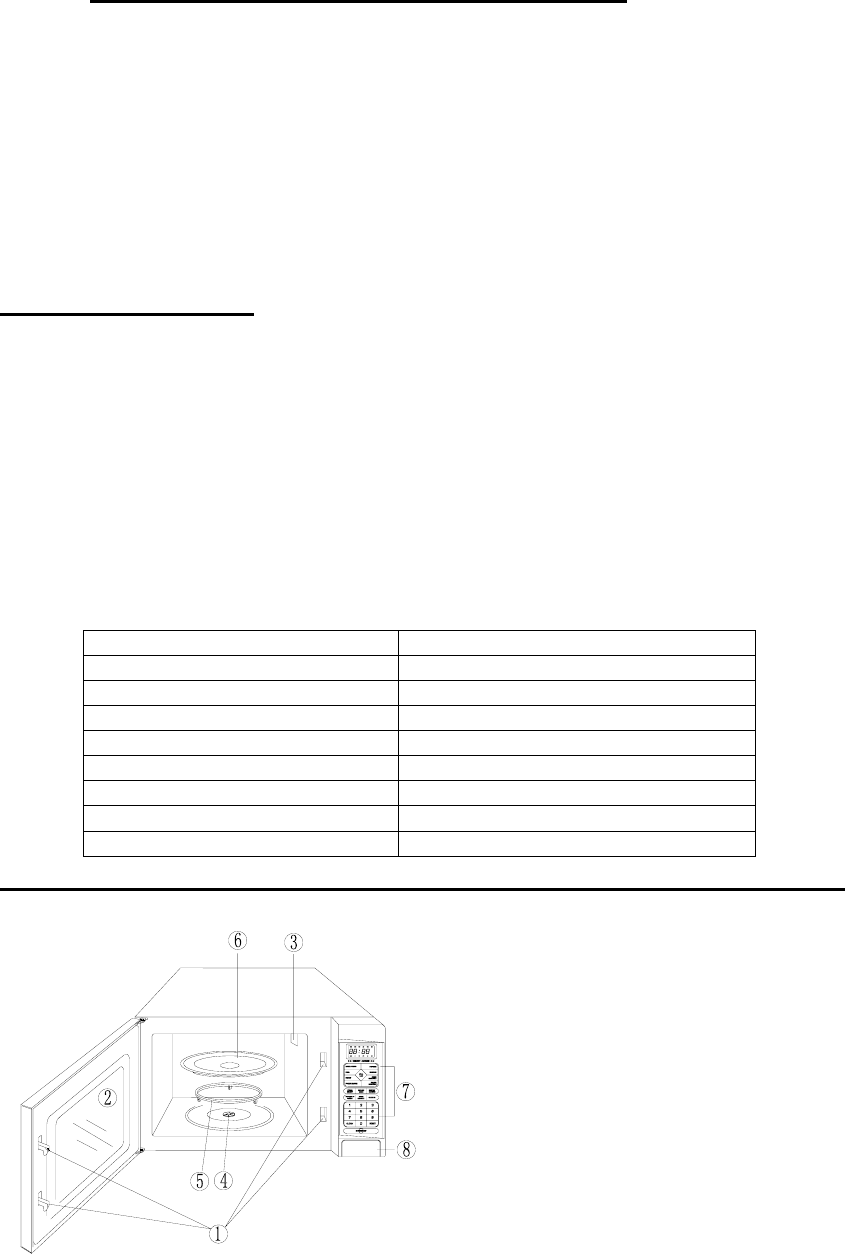
5
given supervision or instruction concerning use of
the appliance by a person responsible for their
safety
MICROWAVE COOKING PRINCIPLES
1. Arrange food carefully. Place thickest areas
towards outside of dish.
2. Watch cooking time. Cook for the shortest
amount of time indicated and add more as
needed. Food severely overcooked can smoke
or ignite.
3. Cover foods while cooking. Covers prevent s
4. pattering and help foods to cook evenly.
5. Turn foods over once during microwaving to
speed cooking of such foods as chicken and
hamburgers. Large items like roasts must be
turned over at least once.
6. Rearrange foods such as meatballs halfway
through cooking both from top to bottom and
from the center of the dish to the outside.
UTENSILS GUIDE
1. The ideal material for a microwave utensil is transparent to microwave, it allows energy to pass
through the container and heat the food.
2. Microwave can not penetrate metal, so metal utensils or dishes with metallic trim should not be
use.
3. Do not use recycled paper products when microwave cooking, as they may contain small metal
fragments which may cause sparks and/or fires.
4. Round /oval dishes rather than square/oblong ones are recommend, as food in corners tends to
overcook.
The list below is a general guide to help you select the correct utensils.
Cookware Microwave Cooking
Heat–Resistant Glass Yes
Non Heat–Resistant Glass No
Heat–Resistant Ceramics Yes
Microwave–Safe Plastic Dish Yes
Kitchen Paper Yes
Metal Tray No
Metal Rack No
Aluminum Foil & Foil Containers Yes
PART NAMES
①Door Safety Lock System
② Oven Window
③ Oven Air Vent















